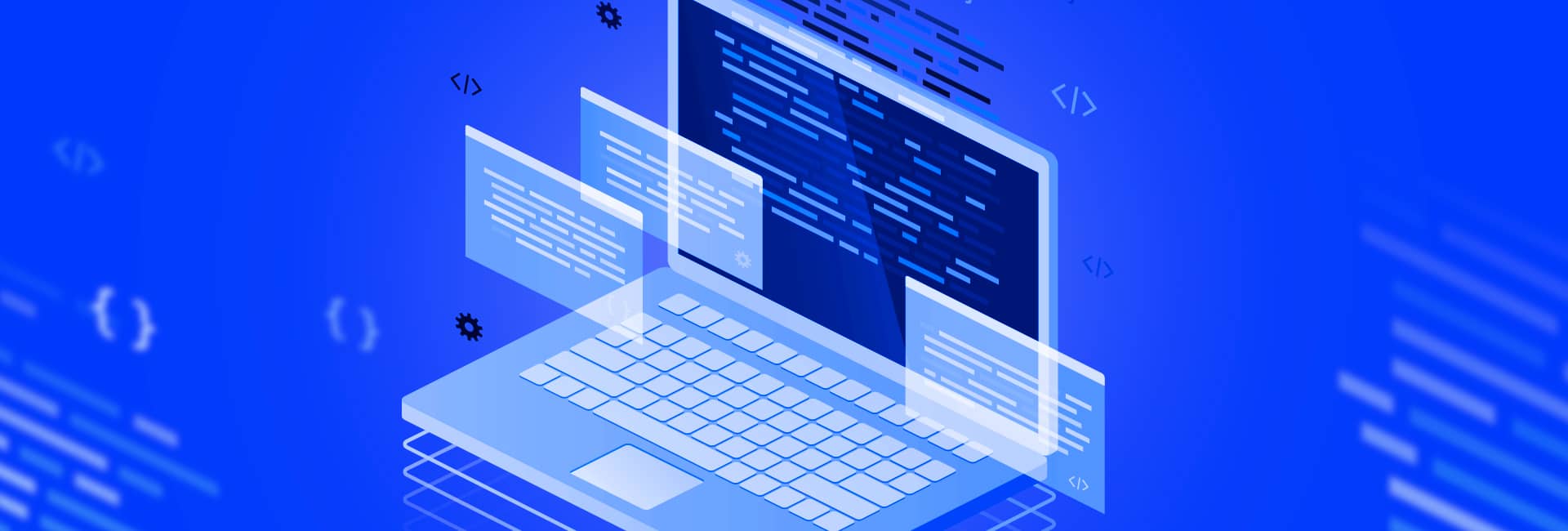Writing clean code in the software development community is considered more an art form than a science. Why? Because everyone has different methods, tips, tools, and experiences in writing cleaner code. But like any form of art, precision and cleanliness are key. Clean code may not only seem aesthetically pleasing but also plays a significant role in the overall success of a software project and it's a necessary skill for any developer to hone.
What exactly is “Clean Code”?
Clean code refers to code that is not only functional but also easy to read, understand, and maintain. It is a style of programming that focuses on writing code that is not only correct in terms of functionality but is also written in a way that reduces complexity and is easy for other developers to comprehend. Clean code follows best practices and is well-organized.
Key indicators of clean code:
- Readability
- Simplicity
- Consistency
- Modularity
- Avoidance of Redundancy
- Clarity in Comments
- Version Control
- Error Handling (includes proper error handling mechanisms)
- TestingContinuous Refactoring (developers regularly revisit and improve the codebase to eliminate technical debt and enhance maintainability)
Why does writing clean code matter?
- Better understandability and maintainability.
When developers follow clean coding practices, it becomes easier for teammates and future maintainers to grasp the code's purpose and functionality. Time spent deciphering poorly written code can be better invested in enhancing and extending the application's features. - Improved collaboration and team efficiency.
If everyone on the team adheres to the same clean coding principles, it becomes easier to work together towards a common goal. Clear and understandable code facilitates smoother code reviews, reduces conflicts, and enhances overall team efficiency. - Enhanced debugging and troubleshooting.
Clean code is a developer's best friend when it comes to debugging and troubleshooting. Code that follows clean coding practices helps to identify issues quickly and pinpoint their root cause. Clear organization, meaningful naming conventions, and proper documentation make it easier to trace potential bugs, leading to faster resolution and improved software quality. - Scalability and adaptability.
Maintaining clean code is crucial as projects evolve and scale. Clean code is more flexible and adaptable to changes, allowing developers to introduce new features and functionalities seamlessly. By adhering to clean coding principles, developers can ensure that their codebase is modular, non-redundant, and easily extensible—an essential aspect for long-term project success. - Code reusability and efficiency.
Clean code encourages modularity, abstraction, and reusability. By writing reusable code blocks and following the DRY (Don't Repeat Yourself) principle, developers can reduce duplication, save time, and streamline development efforts. Clean code also promotes efficient use of system resources, optimizing the overall performance of the application.
How can you write cleaner code?
We have a few tips & practices for you!
1. Meaningful variable and function names.
Choose descriptive names for variables and functions that convey their purpose. Avoid generic names like "temp" or "foo," and opt for names that reveal the intent of the code.
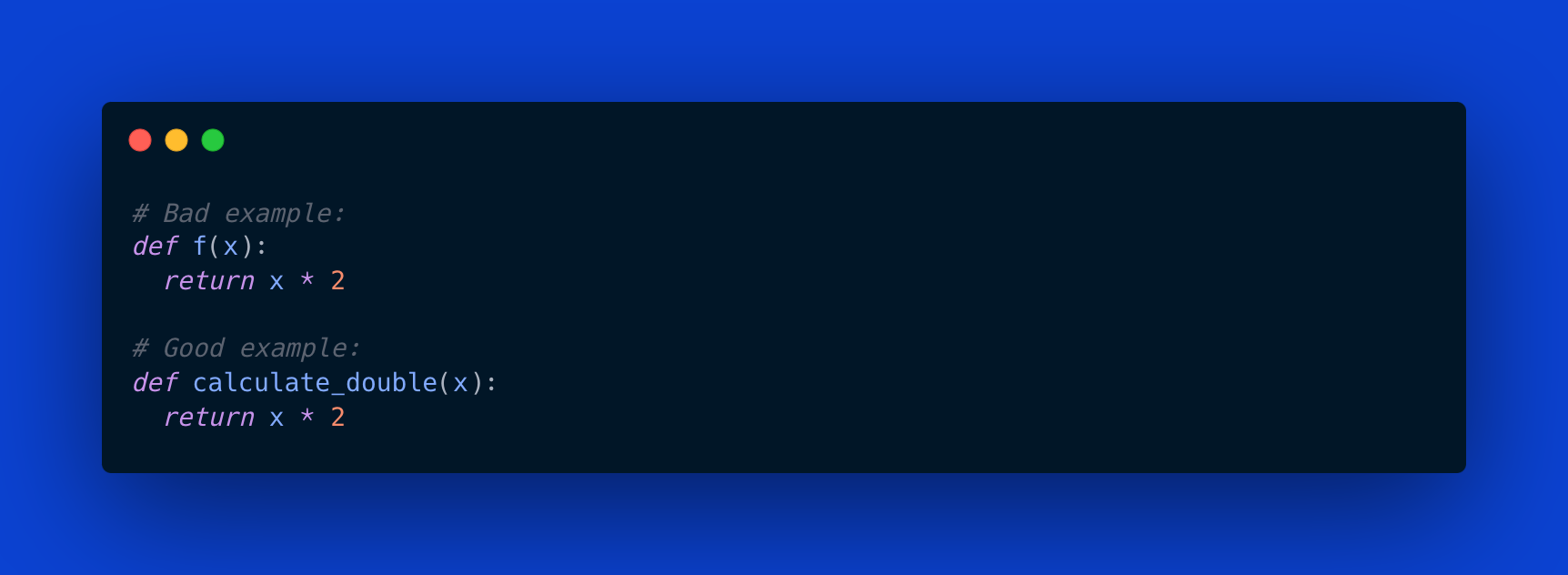
2. Consistent formatting.
Maintain a consistent coding style throughout your project. This includes indentation, spacing, and naming conventions. Consistency enhances readability and makes the codebase more coherent.
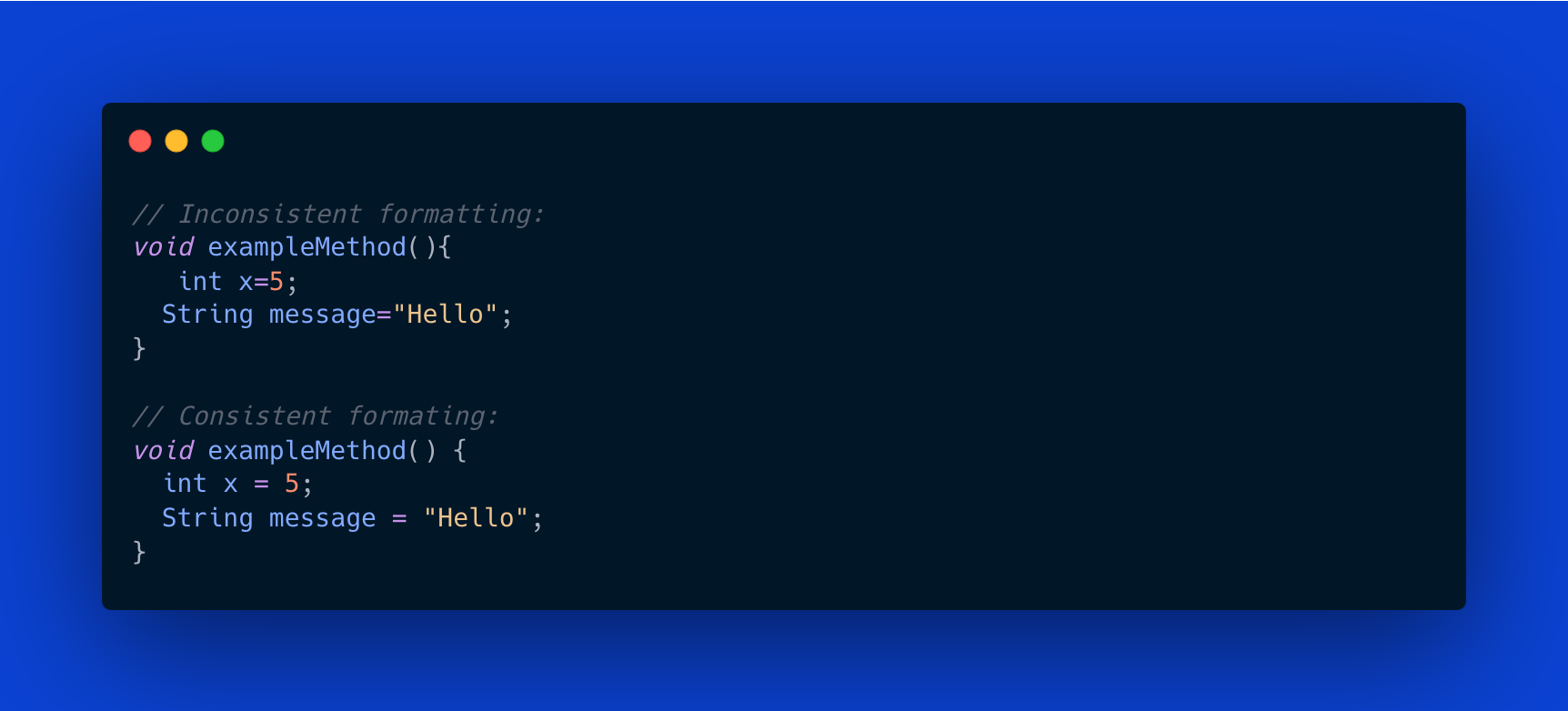
3. Modularize code.
Break down your code into small, modular functions or classes. Each function or class should have a single responsibility. This not only improves readability but also facilitates code reuse and makes testing more manageable.
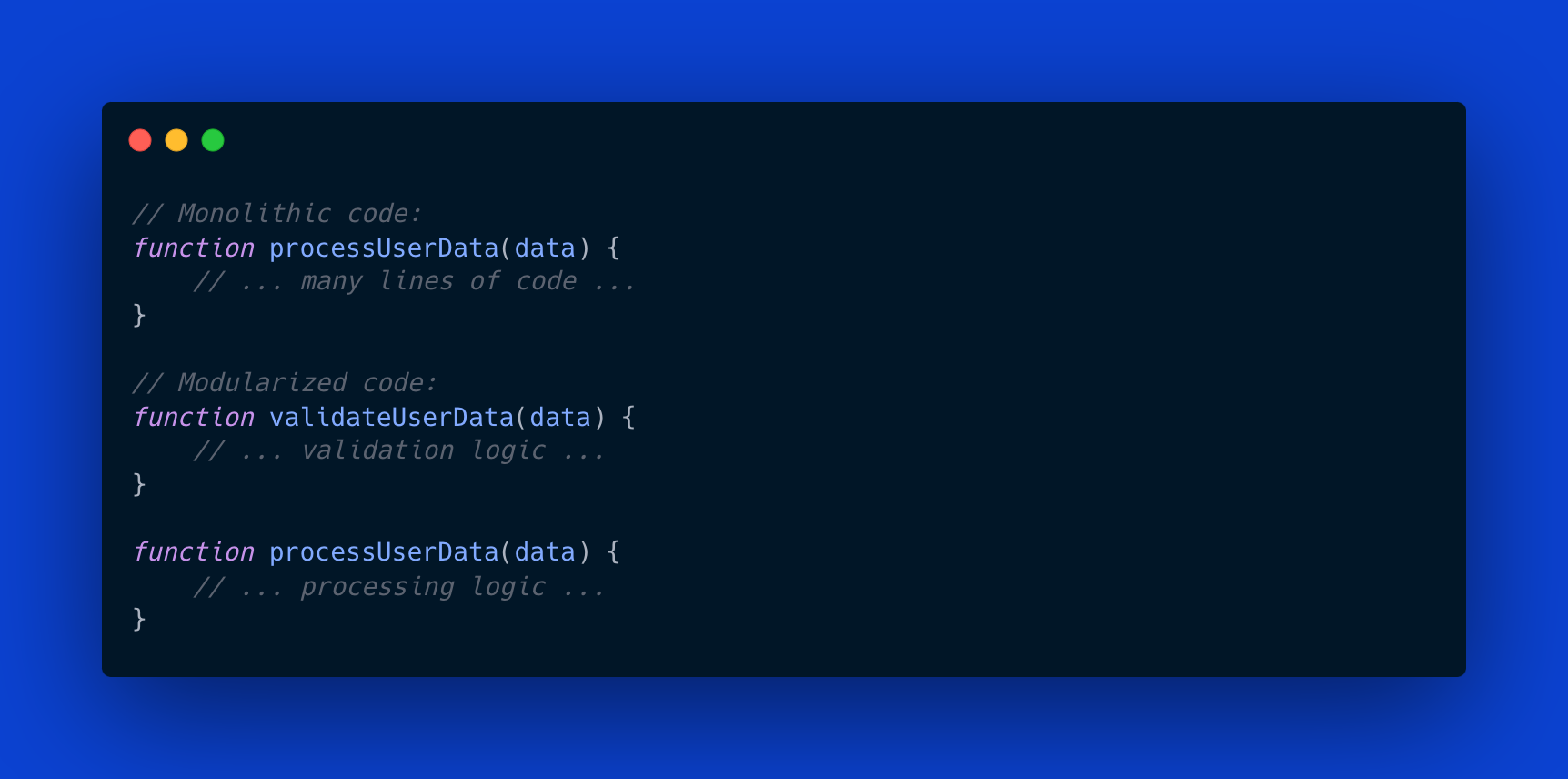
4. Comments and documentation.
Use comments sparingly and focus on writing self-explanatory code. When comments are necessary, ensure they add value by explaining the "why" rather than the "what." Keep documentation up-to-date to help fellow developers understand the purpose and usage of your code.
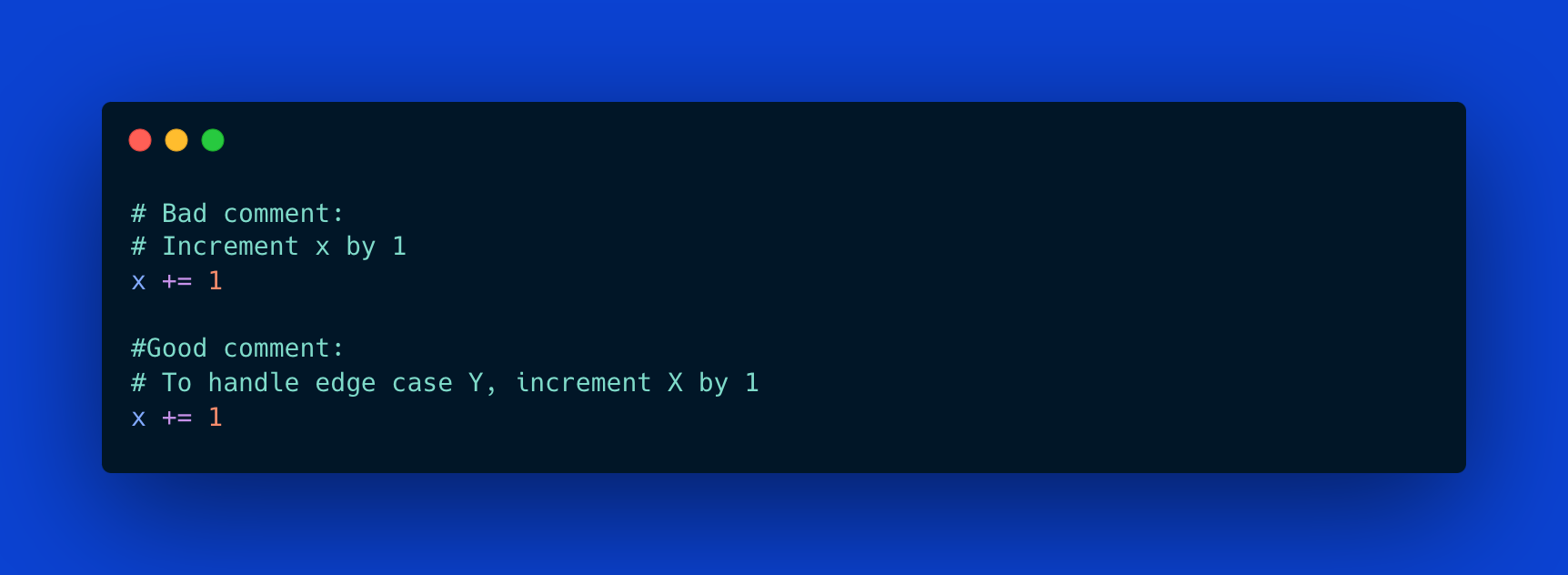
5. Regular refactoring.
Continuously refactor your code to eliminate redundancy, improve efficiency, and adhere to clean coding principles.
Refactoring for Readability: Consider the following piece of code that calculates the factorial of a number:

By refactoring and adding proper formatting and naming conventions, the code becomes more readable:
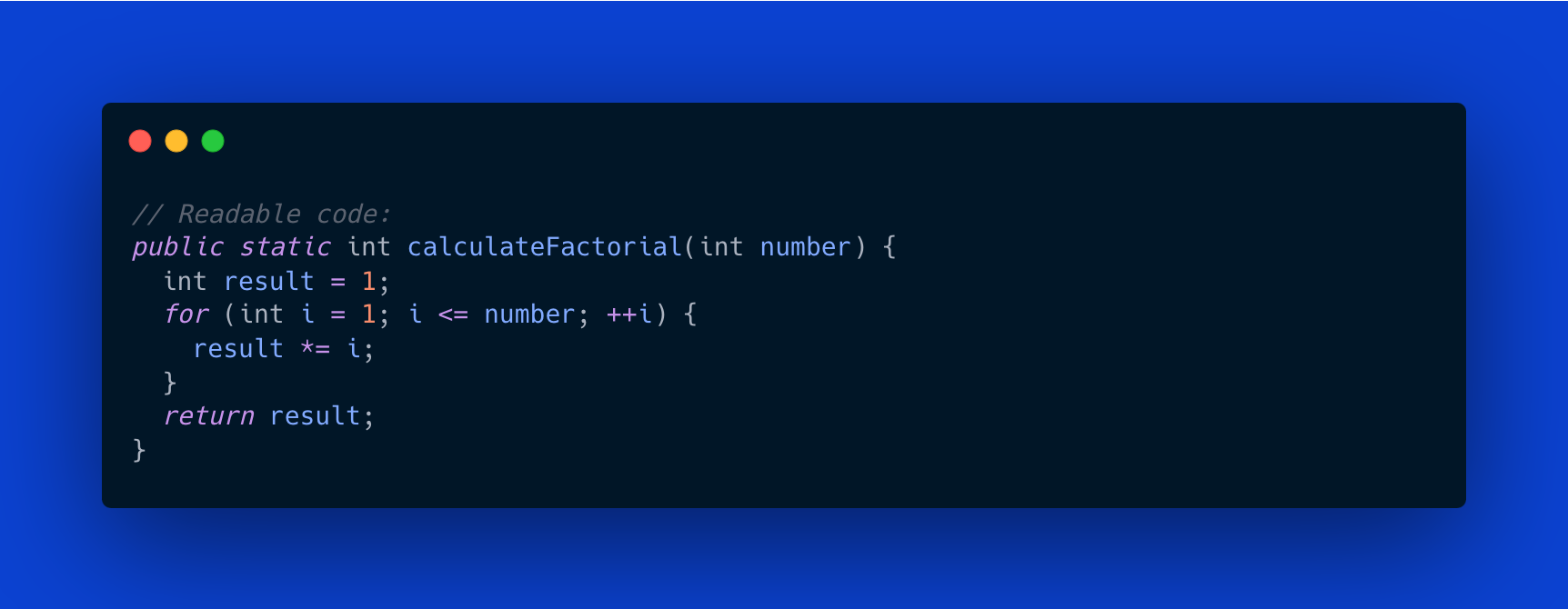
Extra tips:
- Test-Driven Development (TDD).
Write test cases before implementing code to ensure high test coverage and maintainable code. - Continuous Learning and Improvement.
Stay up-to-date with evolving best practices, tools, and techniques to refine your clean coding abilities.
FreeCodeCamp has an amazing full handbook on how to write clean code that we recommend you check out as well!
It's not just a matter of personal preference or team culture; clean code directly influences the success and longevity of a project. By prioritizing readability, maintainability, and collaboration, developers can elevate their coding skills and contribute to a healthier and more sustainable codebase.
Remember, writing clean code is an ongoing process and a skill that improves with practice. As you strive for cleaner code, you're not just making life easier for yourself; you're making a positive impact on the entire development ecosystem.
Happy coding!

